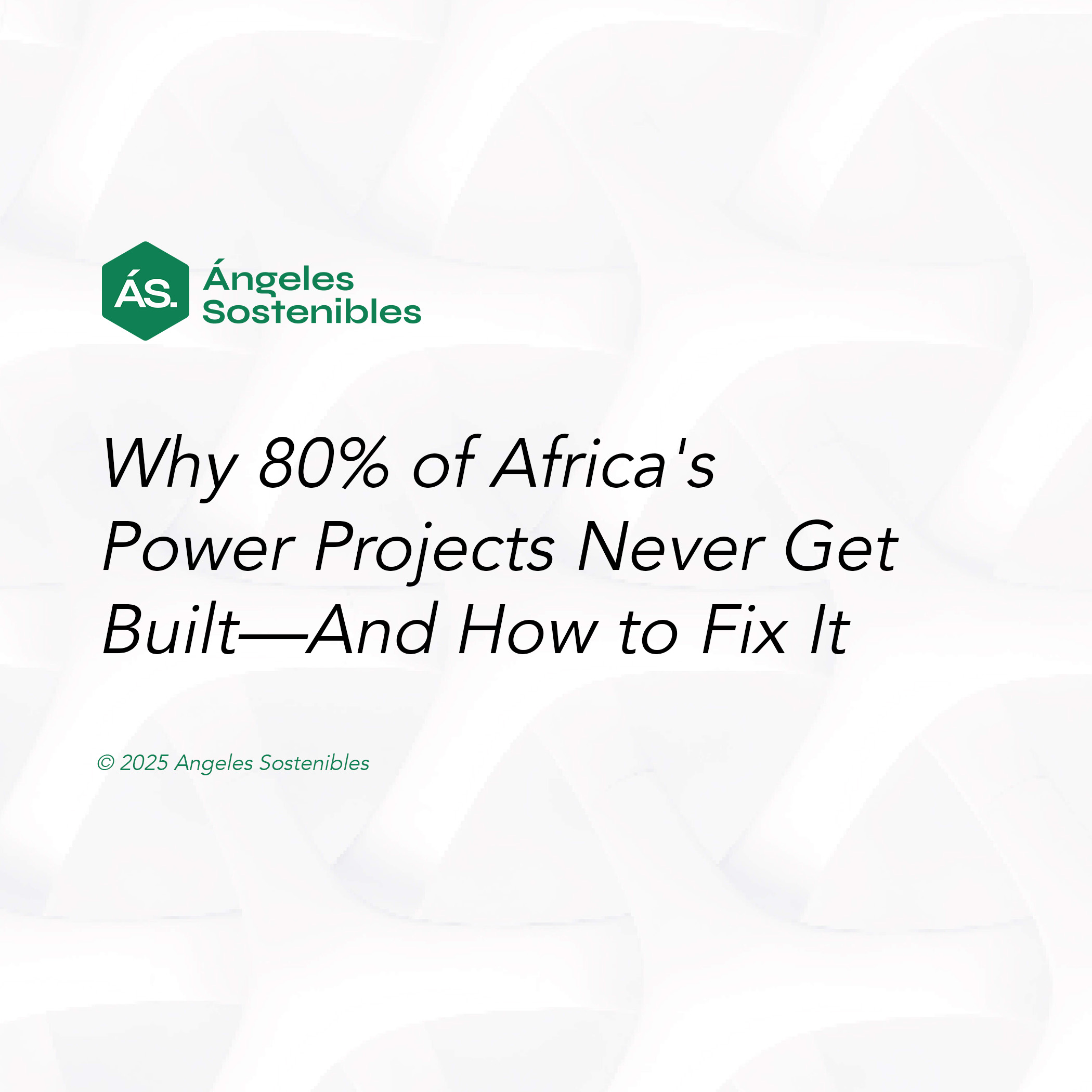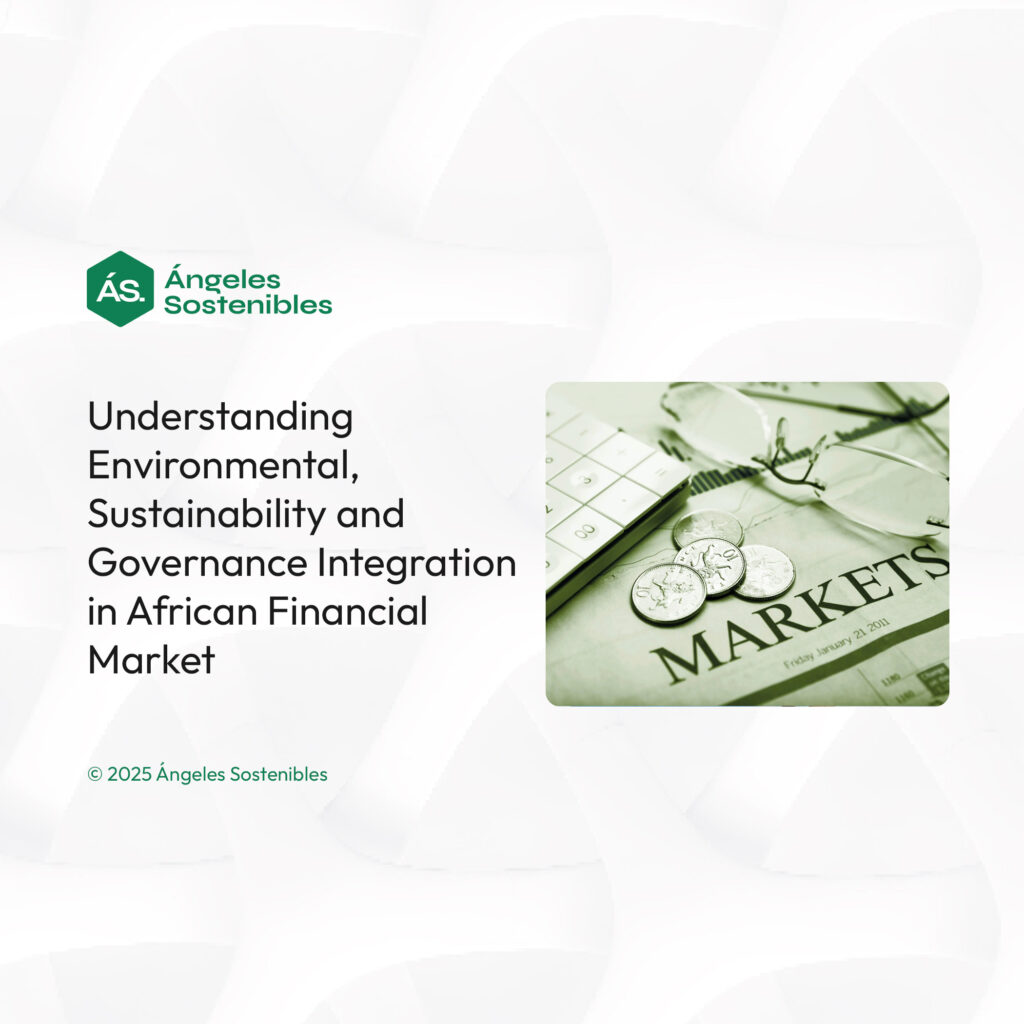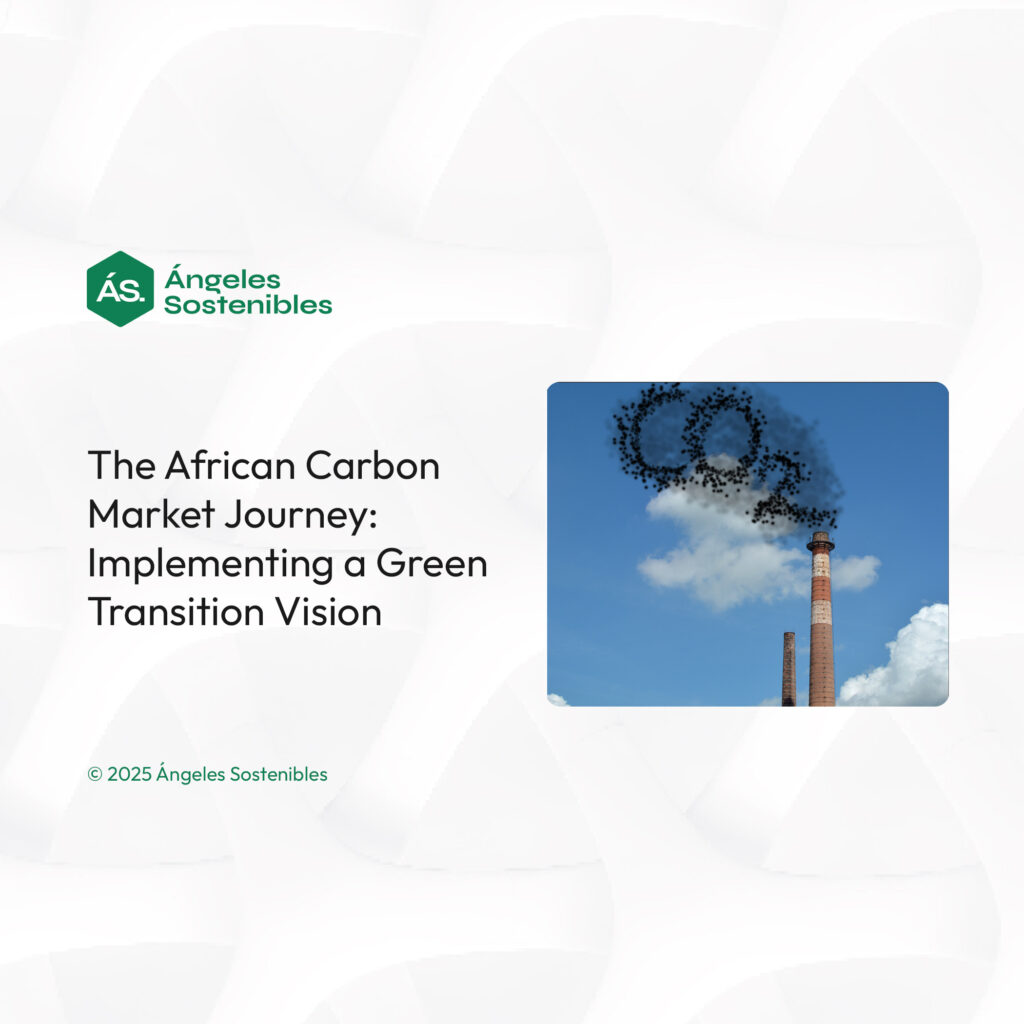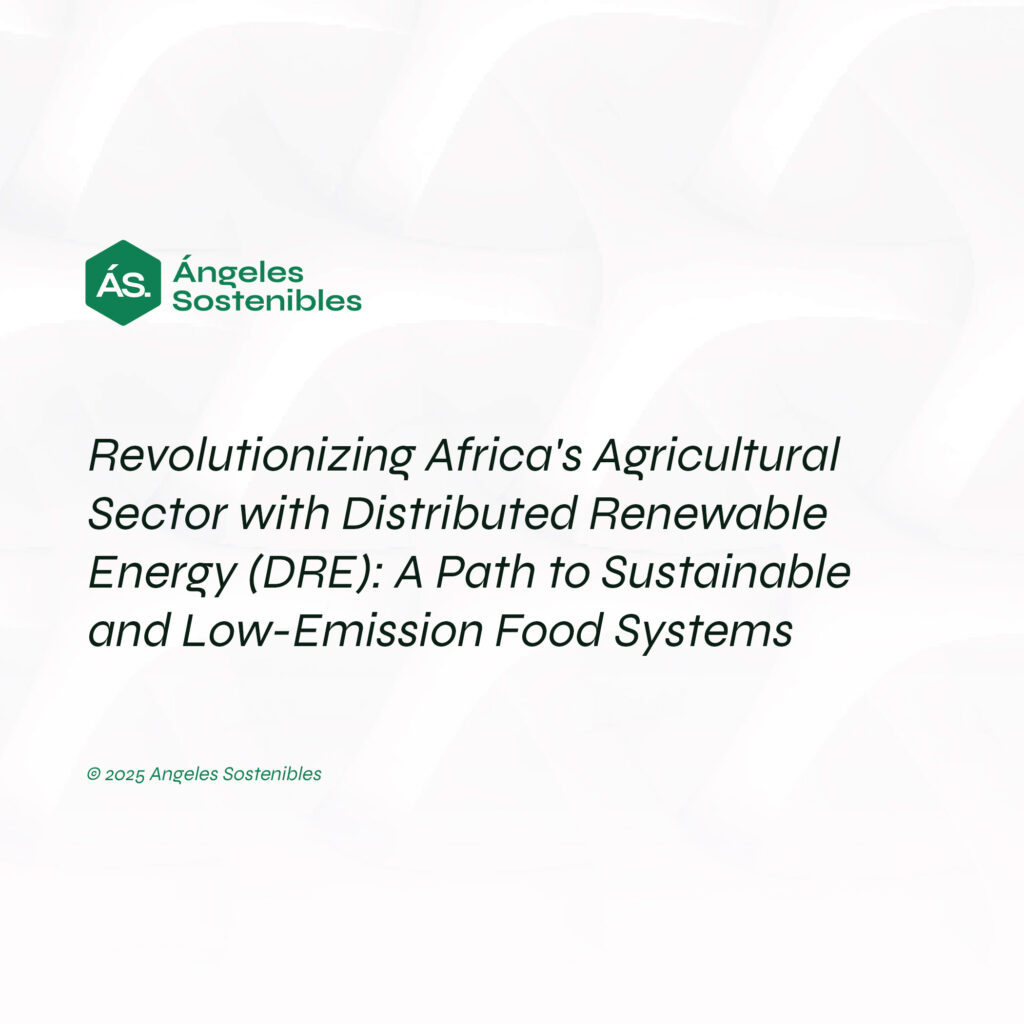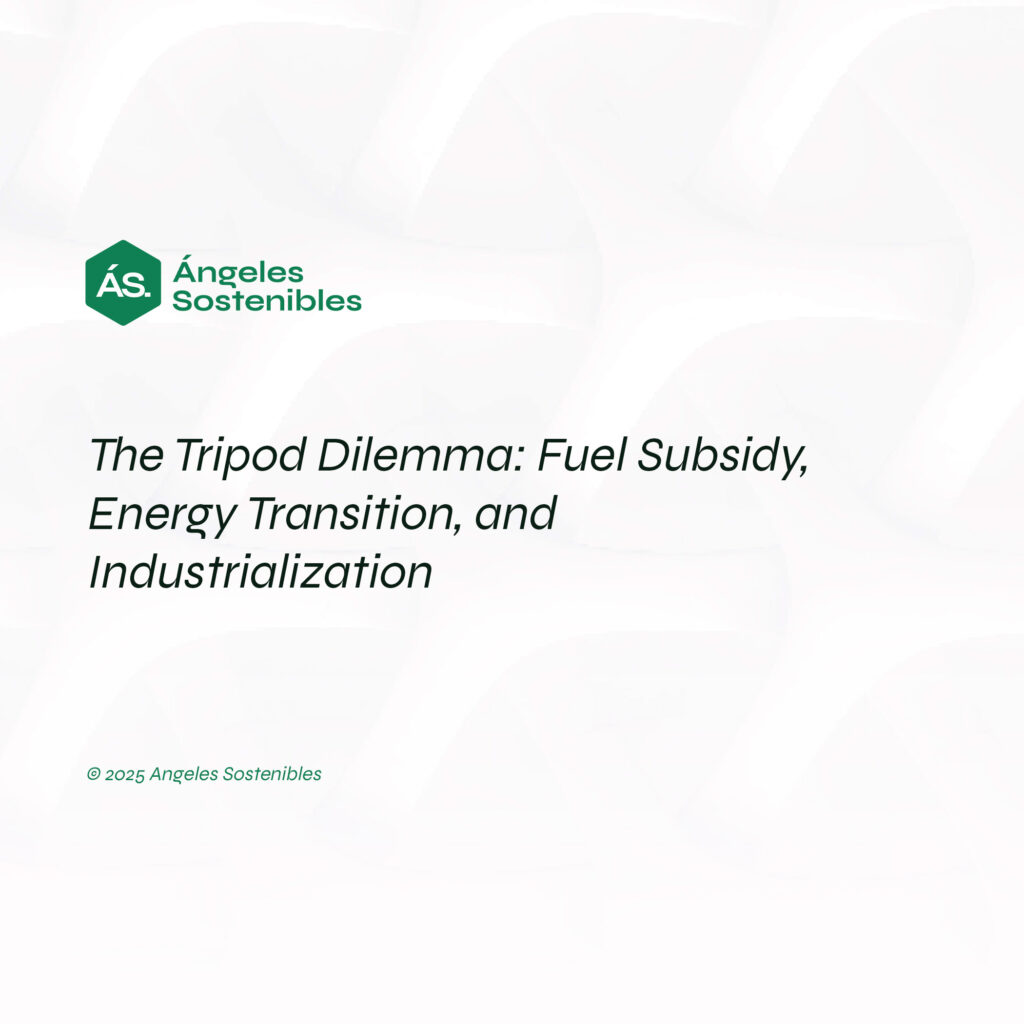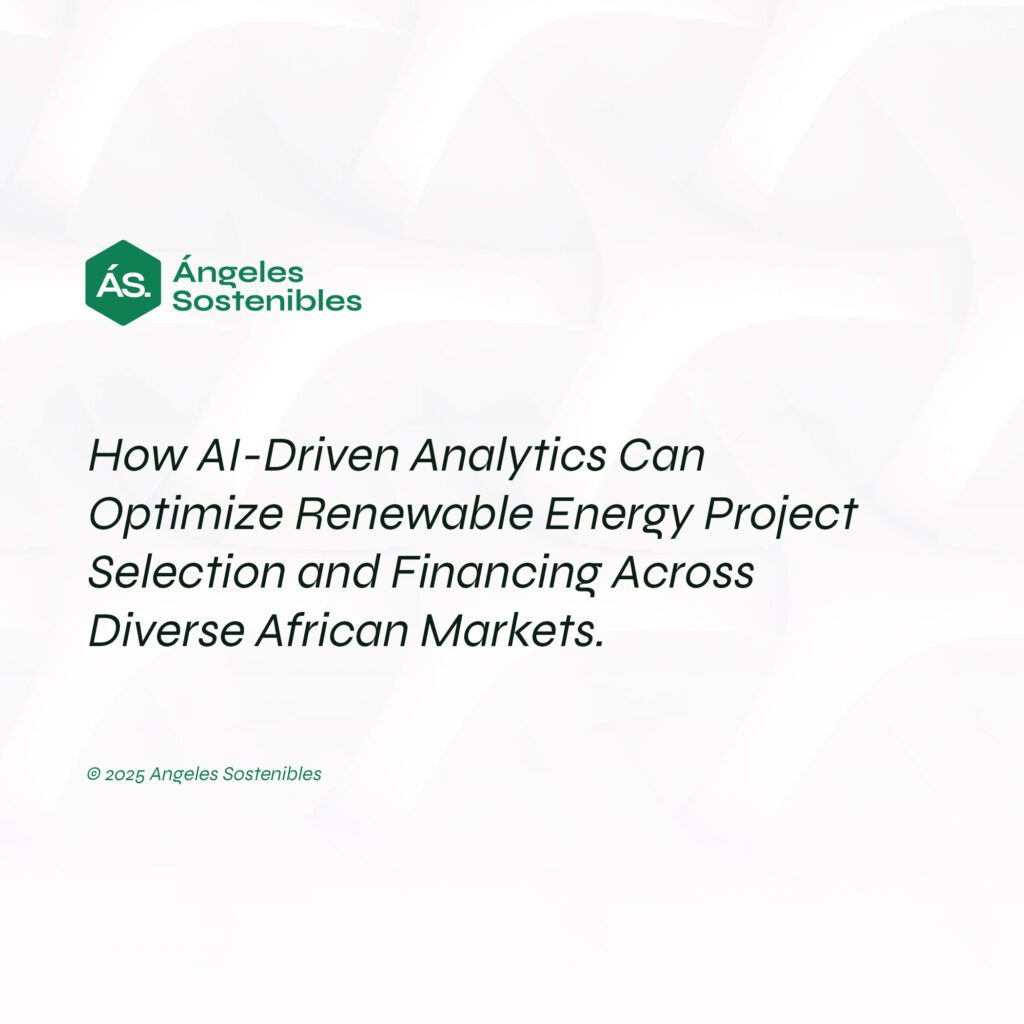Introduction
The data tells a sobering story: approximately 80% of African infrastructure projects never progress beyond feasibility studies—a persistent implementation crisis that has shown little improvement since McKinsey first documented this failure rate (McKinsey 2020)¹. Recent evidence confirms the problem persists: in 2024, Africa added only 6.5 GW of utility-scale power generation against a minimum requirement of 16 GW annually, while the continent requires $3.2–4.3 billion yearly for transmission infrastructure that remains largely unbuilt⁸. This implementation gap represents not just delayed development but vanished opportunities across a continent hungry for reliable power. This memo distils insights from extensive field research across multiple African markets, revealing how reimagined public-private partnerships can systematically break through this feasibility barrier.
The continent’s energy sector operates within a framework of extraordinary contrasts from Morocco’s advanced renewable energy markets to Chad’s nascent electrification efforts, from Nigeria’s complex federal regulatory structure to Rwanda’s streamlined investment climate. The irony is stark: a continent blessed with some of the world’s most abundant energy resources—from the Sahara’s solar intensity to the Congo Basin’s hydroelectric capacity—continues to struggle with chronic power shortages. Over the past decade, electricity generation has increased by less than 2% per year, well below average real GDP growth of 3% and population growth of 2.4%⁸. While countries like Germany can operate sophisticated grids with limited natural resources, African nations with vastly superior energy endowments remain trapped in a cycle of energy poverty. The challenge isn’t geological or technological— it’s institutional and financial, rooted in partnership structures that consistently fail to bridge the gap between resource abundance and reliable electricity delivery.
Encouragingly, a vanguard of organizations is pioneering innovative approaches that transcend traditional models. Africa50’s seamless development-to-financing methodology has dramatically accelerated projects like the Malicounda Power Plant in Senegal. South Africa’s groundbreaking Independent Transmission Projects (ITP) program offers a landmark blueprint combining private sector dynamism with strategic DFI backing. The World Bank and IFC have crafted evolutionary risk transfer frameworks in Kenya that progressively build investor confidence through calibrated risk allocation.
These pioneers demonstrate that the feasibility trap is not inevitable—it’s solvable through deliberate redesign of how we structure, finance, and implement power infrastructure partnerships.
Why Current Partnerships Keep Failing
Conventional PPP methodologies in African power markets typically falter for reasons that go beyond mere complexity. Their fundamental design creates predictable failure points:
- Phase Fragmentation Syndrome: Development, financing, and implementation exist as disconnected kingdoms with different rulers, languages, and incentives— each handoff bleeds momentum.
- Static Risk Allocation Rigidity: Risk frameworks designed for mature markets are imposed wholesale on emerging economies without evolutionary adjustment mechanisms
- Regulatory Archipelago Effect: Each project navigates unique approval islands with few navigational aids or standardized passages between them
- Knowledge Isolation Patterns: Hard-won implementation lessons remain trapped within project, company, or country boundaries rather than creating a rising tide of shared expertise
- Edifice Complex Temptation: Political and financial incentives favour ambitious megaprojects over pragmatic scaling approaches that build capacity alongside physical infrastructure.
This dysfunctional ecosystem manifests stark regulatory contradictions across neighbouring countries. As one developer illustrates: “Zambia permits private ownership of transmission infrastructure while South Africa, Mozambique, and Zimbabwe retain state control over their transmission assets.” Similarly, Kenya operates with advanced IPP frameworks and open grid access policies, while Ethiopia remains locked in vertically integrated, state-run utility monopolies.
TCN Nigeria’s early forays into traditional PPP structures encountered implementation quicksand precisely because rigid risk allocation frameworks failed to account for Nigeria’s grid constraints and regulatory particularities. Meanwhile, Kenya’s evolutionary approach established market confidence through progressively more sophisticated risksharing mechanisms. Rwanda’s discipline in starting with manageable demonstration projects before expanding to more complex initiatives show how sequential scaling outperforms the big-bang approach.
The challenge extends beyond technical considerations to the fundamental coordination problem. As one industry expert puts it bluntly: “We cannot trade what we cannot transmit.” Most implementation frameworks fail to account for the interdependence between physical infrastructure requirements, regulatory frameworks, political stability, currency risk, grid capacity, and local stakeholder dynamics—treating them as sequential hurdles rather than an integrated challenge requiring simultaneous resolution.
Four Essential Principles for Partnerships That Actually Work
Our extensive market experience suggests four architectural principles that must form the foundation of any reimagined PPP framework for African power infrastructure:
1. Smart Risk Sharing That Adapts Over Time
The next generation of PPP models must recognize that risk allocation is a journey, not a destination:
- Dynamic Risk Calibration: Crafting risk matrices that evolve as markets mature, adapting allocation between public and private actors over project lifecycles
- Progressive Confidence Scaffolding: Building transitional support structures that gradually shift from public to private risk-bearing, as demonstrated performance creates market confidence
- Precision Risk Instruments: Deploying targeted mitigation tools that address specific barriers rather than blanket guarantees that distort market development The IFC’s Scaling Solar program in Zambia and Senegal exemplifies this evolutionary approach³. Initial projects received comprehensive risk mitigation packages covering everything from resource assessment to off-taker credit risk. As market confidence and local capabilities developed, these supports were systematically calibrated— focusing only on remaining risk bottlenecks rather than creating permanent market distortions.
South Africa’s innovative approach with the NTCSA’s Independent Transmission Projects program further demonstrates evolved thinking. By providing transparent revenue guarantees through predictable wheeling tariffs secured by development finance instruments, this model addresses the precise investor concern that most frequently derails transmission projects—revenue uncertainty—without overengineering the entire risk landscape.
2. Smooth Handoffs from Planning to Construction
Traditional PPPs operate like a relay race where the baton is frequently dropped between phases. Next-generation models create a continuous implementation pathway:
- Institutional Continuity Engines: Establishing mechanisms that maintain momentum through traditionally siloed development phases.
- Frictionless Transition Protocols: Designing handoff procedures that preserve knowledge and relationships through project lifecycle transitions.
- Accelerated Approval Architectures: Creating streamlined processes for standardized project structures that reduce transaction costs and implementation timelines.
Africa50’s integrated approach to the Nachtigal Hydropower Project in Cameroon demonstrates this principle in action. By housing both project development expertise and financing capabilities under one institutional roof, Africa50 eliminated the implementation valleys where projects typically stall, reducing development timelines by approximately 40% compared to traditional sequential models⁴.
This integration directly addresses the fundamental challenge articulated by power sector experts: “Infrastructure projects stall precisely because planning, development, and financing operate in separate universes with misaligned calendars, vocabularies, and value systems.” Integrated pathways ensure that grid stability considerations, evacuation capacity planning, and financial structuring evolve simultaneously rather than as disconnected processes with incompatible outputs.
3. Sharing Lessons Learned Across Countries
Successful implementation of scale requires systematically harvesting and deploying insights across markets:
- Cross-Border Learning Networks: Creating structured platforms for sharing implementation insights across regulatory boundaries.
- Adaptable Documentation Templates: Developing standardized frameworks that can be localized to different regulatory environments without reinventing core structures.
- Practitioner Excellence Cultivation: Building human capacity through specialized training programs focused on the specific challenges of power infrastructure PPPs.
Gridworks’ pioneering approach across multiple African markets—from the Amari Power Transmission project in Uganda (Africa’s first independent transmission project) to minigrid development in DRC and distribution utilities in Burundi—demonstrates how dedicated platforms can systematically build market confidence while transferring implementation knowledge across regulatory boundaries⁷. Similarly, the IFC’s regional Advisory Services programs have established communities of practice that systematically transfer implementation knowledge between markets, breaking the cycle of perpetually reinventing approaches to common challenges.
Industry experts advocate for more ambitious coordination: “Develop AU Model Energy Laws and Regulations covering market rules, tariff principles, and transmission protocols” and “empower Regional Power Pools to publish developer toolkits standardizing licensing, PPAs by technology, and transmission protocols.” The Southern African Power Pool (SAPP) offers an encouraging proof point, having linked 12 countries on a synchronized grid and enabled over $2 billion in cross-border electricity trades through standardized protocols and shared knowledge systems⁵.
4. Start Small and Build Success
Rather than attempting to solve all infrastructure challenges simultaneously, effective models build momentum through sequential victories:
- Capability Escalation Pathways: Developing institutional muscles through progressively more complex project implementations.
- Proof Point Generation: Establishing successful demonstrations that build political and market confidence for subsequent initiatives.
- Success Pattern Replication: Systematically applying proven implementation approaches to new contexts with appropriate adaptations.
TCN Nigeria’s Transmission Rehabilitation and Expansion Program with the World Bank illustrates this principle in action. By beginning with targeted rehabilitation projects before tackling more complex network expansions, the program built essential technical and institutional capabilities alongside physical infrastructure. Similarly, Morocco’s disciplined approach to the Noor Ouarzazate Solar Complex—starting with a 160 MW initial phase before scaling to its current 580 MW capacity—allowed market structures, local expertise, and institutional oversight to mature alongside project scale.
The forthcoming ZIZABONA transmission line connecting Zimbabwe, Zambia, Botswana, and Namibia exemplifies this methodology. Rather than attempting to address all regional transmission constraints simultaneously, this project focuses on a specific corridor with strong political backing and clear commercial drivers—creating a success pattern that can be replicated across other regional priorities.
The Stewardship Imperative: Moving Beyond the Trading Mentality
A defining characteristic of successful infrastructure development is what I call the “stewardship imperative” – a fundamental commitment to long-term value creation that contrasts sharply with the short-term extraction approach that has dominated much of Africa’s infrastructure development.
Consider this tale of two approaches:
Two infrastructure developers enter a promising East African market. The first rapidly assembles projects optimized for quick transfer to institutional investors, focusing exclusively on bankability metrics while minimizing their ongoing exposure. The second builds partnerships with local stakeholders to create infrastructure designed for longterm resilience, community integration, and system enhancement beyond the immediate project boundaries.
When inevitable challenges emerge—regulatory revisions, currency pressures, demand fluctuations, environmental stresses—the first developer’s projects frequently falter, while the second’s demonstrate remarkable resilience. The short-term focus optimizes for immediate returns but builds in fundamental fragility that eventually undermines even these limited objectives.
Industry veterans observe this pattern across the continent: “For years, many African nations have relied on concessional and donor-driven financing that prioritized lowestcost bids, side-lining key dimensions like technical reliability, ethical standards, and local industrial development.” This approach epitomizes the trading mentality— extracting value without creating the conditions for sustained success.
In contrast, organizations like Gridworks exemplify the stewardship imperative through their systematic approach across diverse African markets—developing mini-grids in DRC, transmission infrastructure in Uganda and Mozambique, and distribution systems in Burundi—while maintaining long-term operational engagement rather than seeking quick exits⁷. Similarly, Africa50’s commitment to the Nachtigal Hydropower Project in Cameroon through both development and operational phases demonstrates how sustained engagement throughout the project lifecycle enhances adaptability and ultimate success.
Companies like the Elecnor Group offer another instructive example of stewardship in practice. With decades of experience across multiple regions, they develop, finance, build, and operate energy infrastructure under ethical and sustainable frameworks— prioritizing local capacity building, skills transfer, and network reliability in ways that create enduring value beyond immediate project boundaries.
Where to Start Making Change Happen
Implementing these architectural principles requires targeting specific high-leverage intervention points:
• Streamlining Rules and Approvals
Our reimagined models must systematically address what experts describe as “fragmented policies and inconsistent regulations that continue to cost us progress.” The World Bank’s precision-targeted risk mitigation facility for geothermal exploration in Kenya demonstrates how well-designed public interventions can transform specific market bottlenecks without distorting broader market development.
Continental coordination mechanisms like the proposed “regional Independent Regulatory Institution to support national regulators with technical capacity, tariff-setting methodologies, dispute resolution frameworks, and grid access determinations” could provide the connective tissue necessary for cross-border projects to advance beyond theoretical potential to practical implementation.
• Connecting Resources Across Borders
Africa’s extraordinary energy resource diversity—from West Africa’s natural gas reserves to East Africa’s geothermal potential, Central Africa’s hydropower capacity, North Africa’s wind resources, and Southern Africa’s solar endowment—remains largely trapped within national planning frameworks.
The visionary potential is clear: “Geothermal from Kenya and Ethiopia powering data centres in Rwanda and Uganda; surplus hydro from DRC stabilizing grids in Zambia and Zimbabwe; solar farms in Namibia and Botswana exporting clean power to urban centres in Angola and mining belts in the DRC.”
Realizing this potential requires a fundamental shift from “Sovereign to Shared Planning” where “Regional Infrastructure Masterplans evolve beyond donor-driven shelf-ware” into “living documents that integrate national resource maps and cross-border trade flows— co-created through iterative collaboration between governments, utilities, and private developers.”
• Upgrading Power Lines and Grid Infrastructure
Perhaps the most critical intervention point involves addressing the fundamental infrastructure limitations that constrain power flow across regions. The scale of the challenge is stark: Africa added only 6.5 GW of utility-scale generation capacity in 2024, far below the minimum 16 GW needed annually through 2050 to meet basic development goals. Meanwhile, the continent requires at least $3.2–4.3 billion annually through 2040 for transmission infrastructure alone.
The IFC’s work with Kenya’s energy regulatory commission created streamlined approval processes for grid-connected renewable projects, reducing regulatory processing times by over 60% while maintaining system stability standards.
Success stories like “the 400kV Kenya-Tanzania interconnector enabling power trade within the East African Power Pool and providing stable electricity access to more than 168,000 people” demonstrate how targeted interventions in critical network bottlenecks can deliver outsized regional benefits⁶.
• Finding New Ways to Finance Projects
Reimagined PPPs require financial structures that extend beyond traditional sources and instruments. Despite international clean energy grants reaching a record $3.6 billion in 2022, Africa continues to face a chronic shortfall in clean energy finance. The African Development Bank’s Sustainable Energy Fund for Africa (SEFA) demonstrates how technical assistance can be integrated with project financing to build institutional capabilities alongside physical infrastructure.
Industry analysts highlight a particularly compelling opportunity: “Africa’s pension and insurance sectors collectively manage over $350 billion in assets, yet infrastructure allocations remain below 5%, representing a massive, missed opportunity for both economic development and portfolio diversification.” Innovative structures like Infrastructure Investment Trusts, revenue-backed notes, and regional energy bonds can unlock this domestic capital while managing risk appropriately—reducing dependence on external financing sources with their attendant constraints and conditions. How to Make It Work in Practice
Translating these architectural principles into operational reality requires embedding several core practices:
- Continuity Mechanisms that maintain momentum through traditionally fragmented development phases
- Capability Enhancement Pathways that systematically build local capacity through progressive risk transfer mechanisms
- Process Standardization Templates that create efficiency while preserving necessary market-specific adaptations
- Resilience Design Patterns that prioritize long-term operational success over shortterm financial optimization
- Learning Loop Systems that capture and apply implementation lessons across projects and markets
- Institutional Memory Frameworks that preserve and transfer critical knowledge regardless of personnel transitions
- Incentive Alignment Structures that create shared success definitions across stakeholder groups throughout project lifecycles
The IFC’s Scaling Solar program in Zambia demonstrates these principles in practice. By creating standardized processes while adapting to specific market conditions, focusing on capacity building alongside physical infrastructure development, and maintaining implementation continuity from conception through financial close, the program achieved dramatic acceleration in development timeframes.
South Africa’s ambitious Transmission Development Plan 2025-2034, which encompasses more than 14,000 km of new power lines and 133,000 MVA of transformer capacity, offers a reference architecture for other African nations. Particularly encouraging is the emerging relationship between development finance institutions and private capital: “Instead of competing, DFIs are enabling private investment—de-risking projects and creating environments where ethical, transparent, and contractually sound partnerships can thrive.”
Moving From Studies to Success: The Path Forward
By redesigning PPP models around progressive risk transfer, seamless development pathways, knowledge commons architecture, and strategic capacity scaling, we can systematically break through the 80% feasibility barrier that has constrained Africa’s power sector development for decades. This approach transforms the implementation landscape by addressing root causes rather than symptoms.
The continent’s power infrastructure challenges require fundamentally reimagined partnership structures, not incremental improvements to models that consistently underdeliver. The pioneering approaches developed by Africa50, Gridworks, the World Bank, and IFC demonstrate that breakthrough implementation is possible with the right architectural principles and operational practices.
As one industry visionary reminds us: “Africa’s grids may be fragmented today but so were Europe’s in the 1950s. Through strategic investment and harmonized policy, the European Network of Transmission System Operators has enabled near-seamless power flows from Portugal to Poland. Africa can, and must, follow suit—with clarity of purpose, innovation, and bold financing.”
The question is no longer whether Africa’s extraordinary power potential can be realized, but whether we have the collective will to implement the partnership models that will make it happen.
June 10, 2025
© 2025 Angeles Sostenibles All Rights Reserved
Legal Information and Disclosures
This memorandum expresses the views of Angeles Sostenibles as of the date indicated and may be revised or updated without notice. The information is provided for educational and discussion purposes only. While Angeles Sostenibles offers advisory services in renewable energy infrastructure and investment, this document does not constitute a formal recommendation for any specific project, investment, or financing structure. Market assessments and technology evaluations presented are derived from sources believed reliable but not independently verified. Past infrastructure project performance is not indicative of future results. Investments involve substantial risks, including regulatory, political, and operational considerations, that must be evaluated on a case-by-case basis. © 2025 Angeles Sostenibles. All rights reserved—no reproduction without prior written consent.
References
- Solving Africa’s infrastructure paradox | McKinsey
- Renewable Energy Market Analysis: Africa and its Sub-regions | IRENA
- IFC Scaling Solar Program: Lessons from Zambia | IFC
- Africa50 Infrastructure Investment Platform | Africa50
- Southern African Power Pool Annual Report | SAPP
- Kenya-Tanzania Power Interconnector Project | African Development Bank
- Gridworks Development Impact Case Study | BII British International Investment
- State of Africa’s Infrastructure Report 2025 | Africa Finance Corporation

